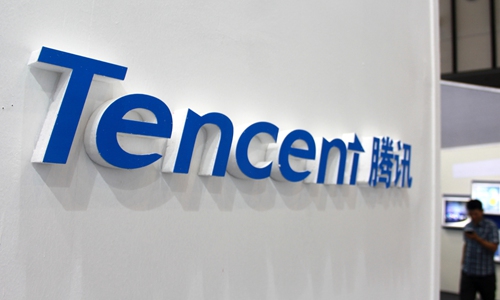
China's technology giant Tencent reaches out to individuals and organizations worldwide with its telecommunication services. Photo: cnsphoto
Revenue and profits of Chinese technology giant Tencent in the second quarter grew nearly 30 percent year-on-year each, beating market expectations under the shadow of the US president's executive order that affects its WeChat app.
According to Tencent's earnings report released on Wednesday, revenue rose 29 percent to 114.88 billion yuan ($16.54 billion) year-on-year, beating Bloomberg's estimate of 26.59 percent.
Profit attributable to equity holders was 30.15 billion yuan, an increase of 28 percent on a yearly basis, also higher than Bloomberg's estimate of 24 percent.
Revenue from the online games segment, Tencent's major source of income, surged by 40 percent, driven by increased income from both domestic users and international users for its popular games including Peacekeeper Elite and Honor of Kings, the company said.
Revenue from fin-tech and business services increased 30 percent. The increase mainly reflected revenue growth from commercial payments due to increased average daily transactions and value per transaction, from wealth management, as well as from cloud services.
Combined monthly active users of WeChat had exceeded 1.2 billion as of June 30, up 6.5 percent year-on-year, according to the report.
Tencent's WeChat, the popular social networking app, has come into focus as the Trump administration issued an executive order last week that prohibits any transaction by US firms related to WeChat. The executive order comes into effect in September.
Analysts have said that even if WeChat had to fully retreat from the US market, it will have little impact on the firm's revenue and its internet ecosystem, which have been built up over several years.
In the earnings call late Wednesday, Tencent said revenue in the US market accounts for less than 2 percent of its global revenue, and US businesses account for less than 1 percent of its global advertising revenue.

